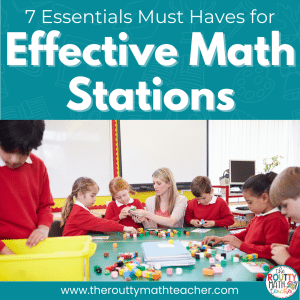
Effective Math Stations: 5 Proven Secrets
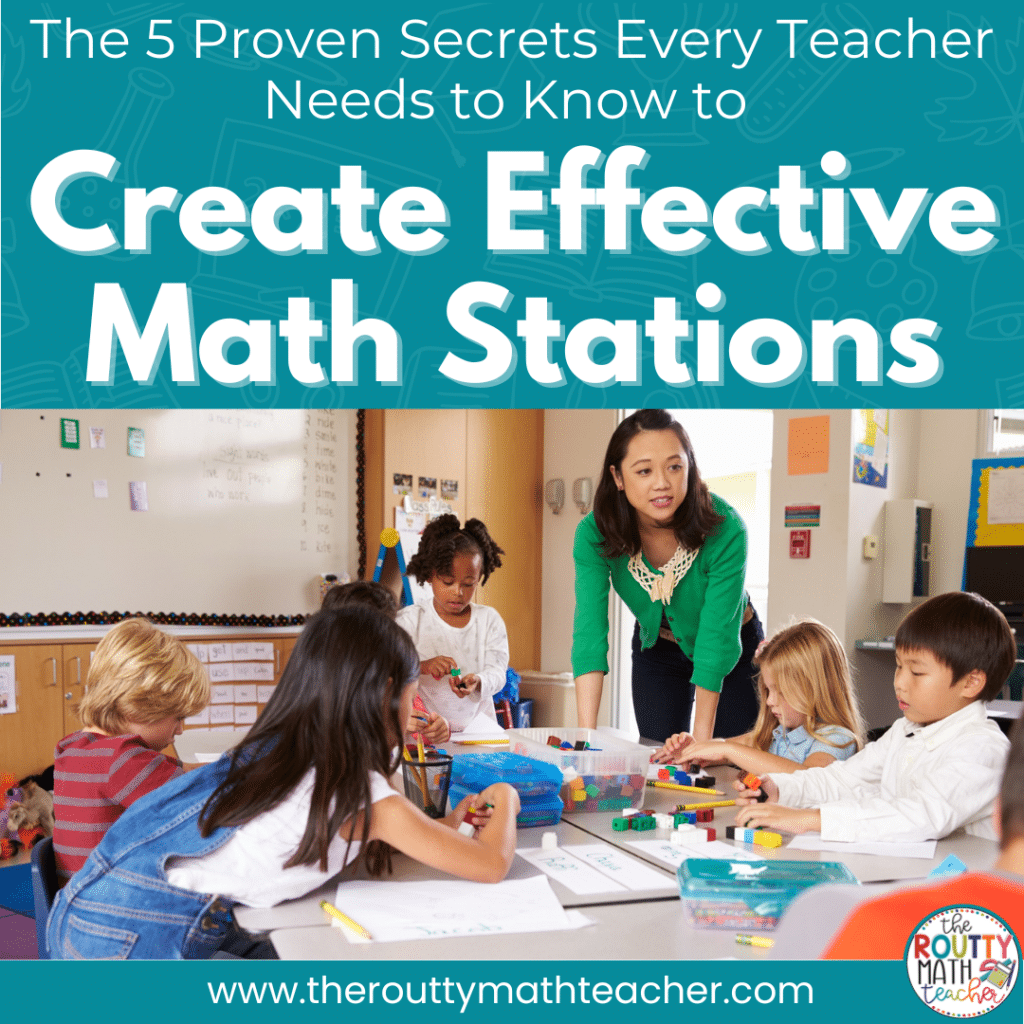
Effective math stations are not achieved overnight. Like any routine, it takes lots of practice. In this post, I share five proven strategies for building a successful math station routine.
A few years back, I was on a quest to establish routines to help me feel more energized and productive during the day.
As it were, I was sluggish and tired. All. The. Time.
Workdays were long and evenings were busy . . . so I was burning the midnight oil to keep my head above water.
Finally, I’d had enough. Maintaining this kind of schedule was impossible!
I decided to make a change. First, I researched some strategies. Then, I reached out to some friends who found success in this area to get some helpful tips and tricks.
Here’s the plan I created:
I established a consistent bedtime. This allowed me to get at least seven hours of sleep. I also established some expectations, such as setting a sleep timer on the TV for thirty minutes so I did not wake up in the middle of the night with the TV blaring.
Instead of scrolling through Facebook before bed, I left my phone on the charger. I even covered all of the bright lights, from the alarm panel and cable box, in the room to prevent the light from disturbing my sleep.
Do you know what happened next?
I started to get good sleep and I felt better during the day. 😁
Establishing routines and setting ourselves up for success is essential to leading happy and healthy lives. But, this doesn’t only apply to life outside the classroom, it applies to life inside the classroom too.
Effective Math Station Routines
Math stations do not become a successful routine overnight. We all know, like any other classroom routine, it takes practice and tweaking and practice and tweaking and . . . you get the picture, right?
While I still had to teach my math station routine each year, there are several secrets to success I discovered along the way. These strategies are simple and easy to execute, and they help create effective math stations with a sustainable routine and reliable expectations.
Strategies For Effective Math Stations
1. Practice Makes Permanent
I once worked with a principal who said, “you go slow to go fast,” meaning we may need to slow down to accomplish something that will propel us forward later. This is so true in the first weeks of school.
I begin teaching my math station routine during the first two weeks of school. Typically, I will start with all of my students working in groups to complete the same activity so I can reinforce expectations for group learning.
After one or two experiences, I move to a two-station rotation where I can monitor both groups and provide feedback to the class. As students get comfortable with the routine, I increase the number of rotations.
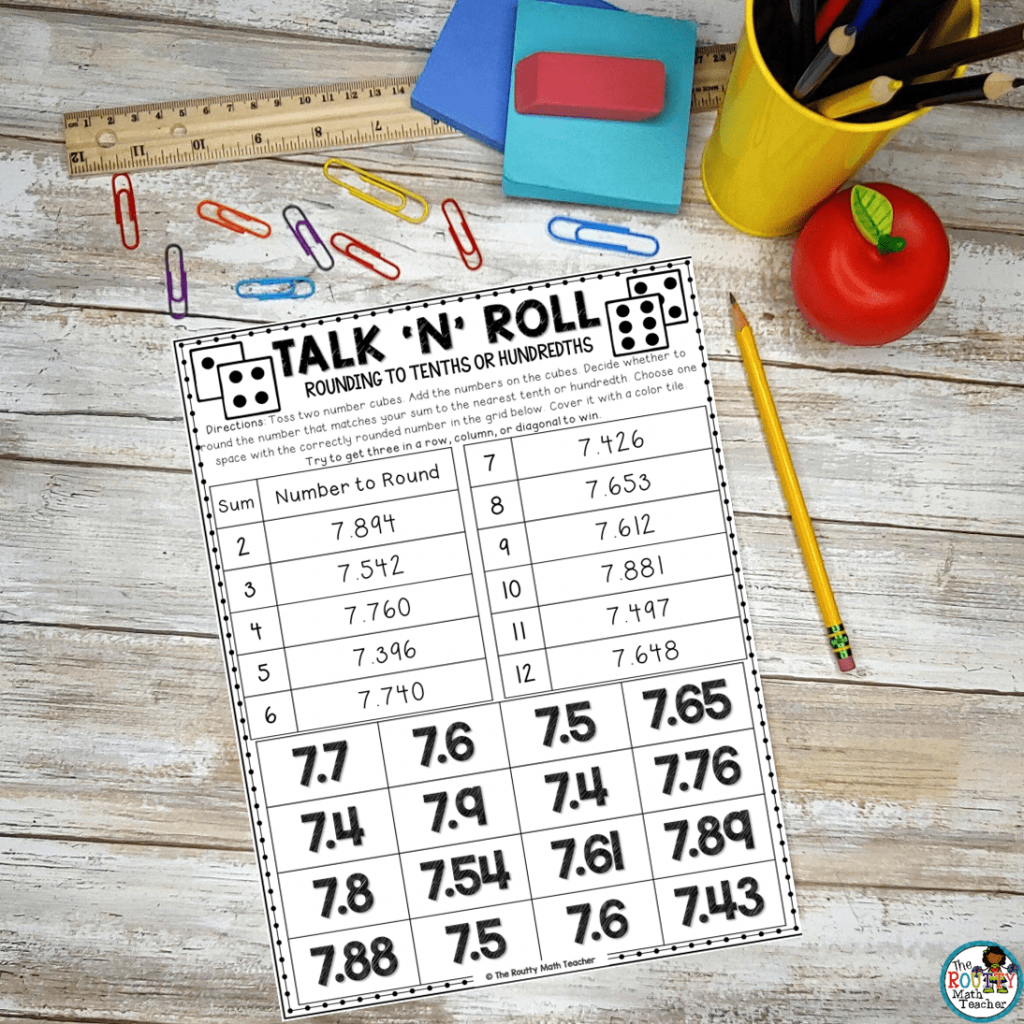
2. Use Familiar Activities
One of my biggest secrets to success is to use versatile game formats or games with which the students are familiar. Why do I do this? Because I don’t have to take time before beginning the rotation to teach students how to play the game.
One of the biggest time-sucks when it comes to math stations is reviewing the activity directions for each station. (And, yes, I find this is still true even when there are student-friendly directions because students have to take the time to read through them and make sense of the task.) When students have experience with the task, they can get to work right away . . . an expectation for my students.
You may be wondering if students get bored with the same activities. The simple answer is no. Students love games, so they welcome the opportunity to play them. For standards-based games and activities, I introduce them during the initial lesson and then pull them back out for the next station rotation. I then use them again as we get closer to state testing.
I also enjoy using simple card and dice games. These types of games are super versatile and easily modified to match many skills.
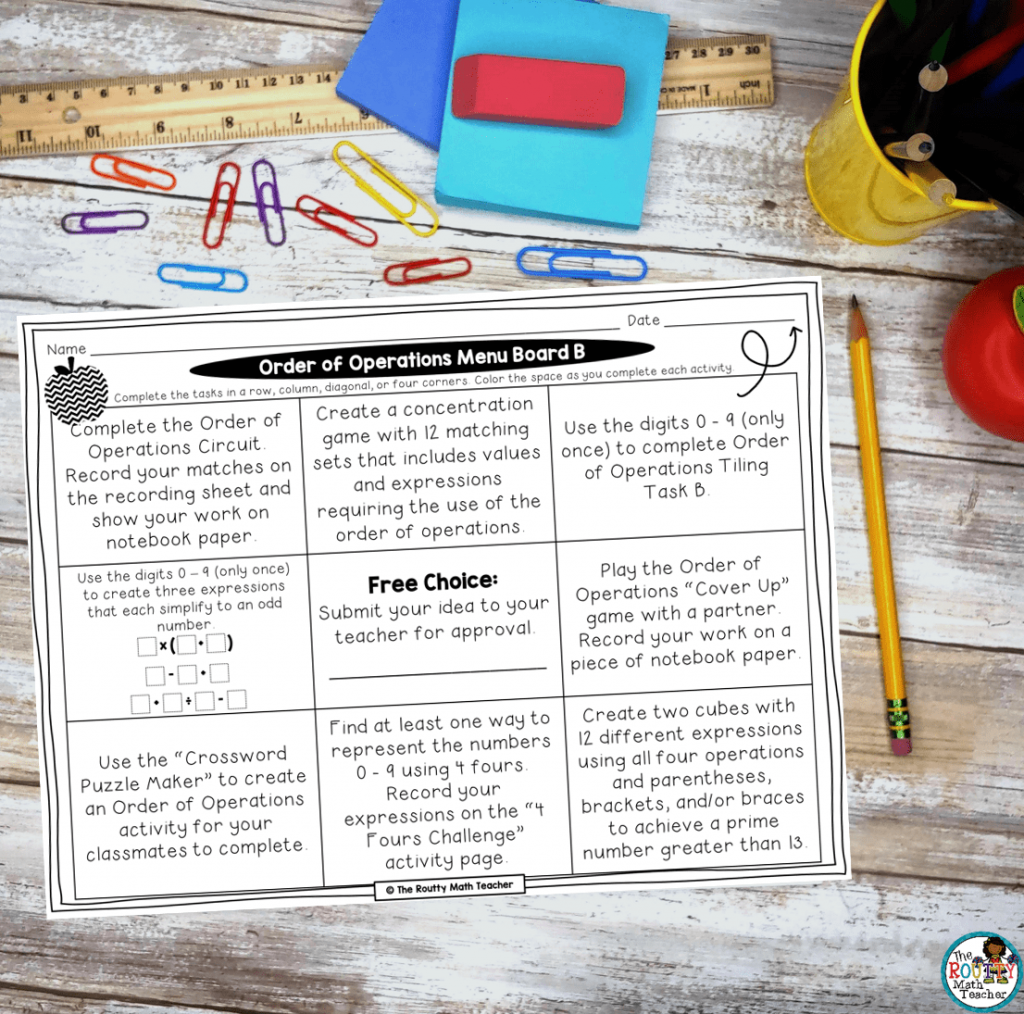
3. Prepare a Fast Finisher Task
Another system I set-up to help my students be successful with math stations is to over-prepare. Sometimes, I include multiple activities in a station bucket– more than what can be completed in the 15 to 20-minute station rotation time. If we are working on a math menu , I will often use this as the fast-finisher task. Other options include computer games or digital activities, challenge tasks or enrichment activities, and problem-solving activities.
While I like to keep the fast finisher activities related to the station concept or skill, it’s important to have a plan for what students will do if they finish an activity early. Engaged and on-task students do not become behavior management problems.
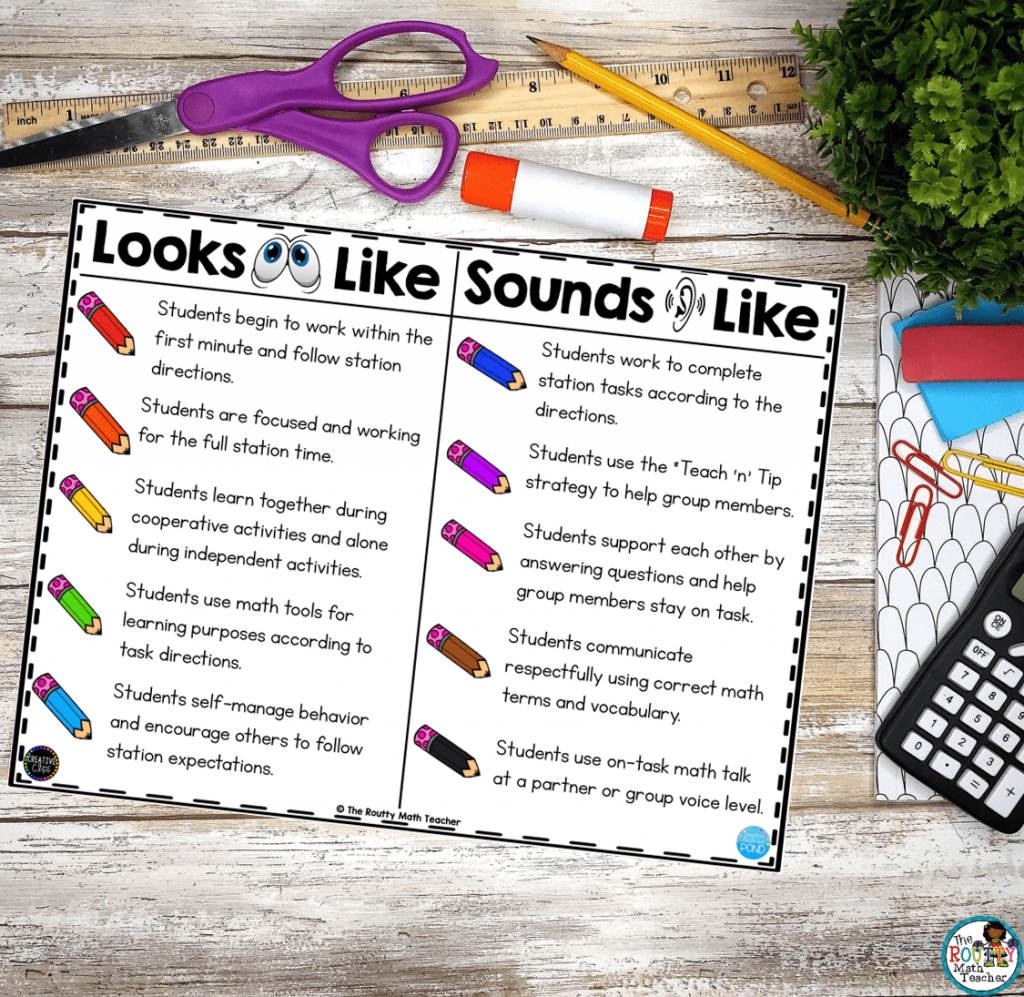
4. Reinforce Expectations
A colleague once asked me, “How do you get your students to complete the tasks?”
I’ll admit the question surprised me. I remember thinking, “Because that’s the expectation.” But then, I asked myself, “Well, how did you build those expectations?”
The simple answer goes back to secret number 1– practice makes permanent. When I first begin teaching students how to do math stations with me, we talk about what stations should look and sound like.
We record the expectations on chart paper. Each day, I chose an expectation to emphasize. In other words, “look for what you like,” emphasize it, and reward students for doing it. Once students have mastered one expectation, I move on to another.
Grab a free copy of my “Looks Like/Sounds Like” chart for math stations using the form below.
5. Manage Station Time with a Sophisticated Timer
My best-kept secret is a TeachTimer. It’s an awesome management tool! What I love most– you can set it to give a warning sound to alert students the station time is about to end.
My students know I expect them to clean up their math station and leave it ready for the next group when the timer goes off, so using a timer that gives a 1-minute warning allows students to get prepared for the next station once the station time has elapsed. (FYI- The timer can be set for 1, 2, 3, 4, or 5-minute intervals, so when you’re practicing, you can gradually decrease the warning time.)
Routines Matter
After finding some keys to success, I was able to adjust my bedtime routine and achieve a restful night’s sleep. I wondered why I had never thought about these things before. These little secrets to success not only helped me establish the routine I needed, but they helped me improve my overall well-being– allowing me to have more energy and be more productive during the day. In fact, when my wellness and readiness for the day improved, I was much happier! 😊
Refining our routines is important for continued success. The math station secrets shared here helped me refine my systems and establish effective math stations and a successful routine for my students.
Want to know more about using math stations in the classroom, grab my free Getting Started with Math Stations eBook!
Sound Off!
How do you help your students become successful with math stations? Share your ideas in the comments below.





8 Responses
I just love your website and ideas! Thank you for sharing!
I’m so glad to hear you are enjoying the website! Please let me know if there is anything specific that you need.
I love your blog! Is it plausible to have more than two stations going at a time or would that be a little chaotic?
Absolutely! I typically run 4-6 math stations at one time. Once students understand the expectations, it flows well. If you want to know more about how I run math stations, you can download my math stations eBook here: https://pages.convertkit.com/1b025784b0/f6ef2e5f44. Please let me know if you have any other questions.
When you teach place value, do you also teach the decimals aspect? My math manual has those as two different chapters. Decimals are introduced sometime in the spring.
Hi Judy!
The answer to your question really depends on the grade you teach and how your curriculum is laid out. In Texas, for fourth and fifth graders, we teach place value with decimals at the same time as we build on the work students did in third grade with whole number place value. It’s all in one unit; however, other decimal skills, such as decimals on the number line or representing decimals as fractions may be taught later. Of course, this can sometimes change based on the school district too. Some districts may choose to start the year reviewing place value, building on the previous year, with whole numbers, and introduce decimal place value later. Personally, I think they should be taught together though . . . just my two cents.
Shametria
What is the Teach n Tip strategy on the expectations chart?
Hi Catherine!
Here’s an overview of the Teach ‘n’ Tip strategy: During partner activities, Partner A should explain his/her answer to Partner B. If Partner B agrees with Partner A’s explanation, he or she can give Partner A a “thumbs up,” “high five,” or other positive response. If Partner B does not agree with Partner A’s explanation, he or she can coach him/her to the correct solution; however, it’s important that Partner B not tell Partner A the answer. Instead, Partner B should give Partner A tips to help him/her determine the correct solution. If after two tips, Partner A cannot determine the correct solution, Partner B can teach Partner A how to reach the correct solution. Then, the partners reverse roles.
Shametria